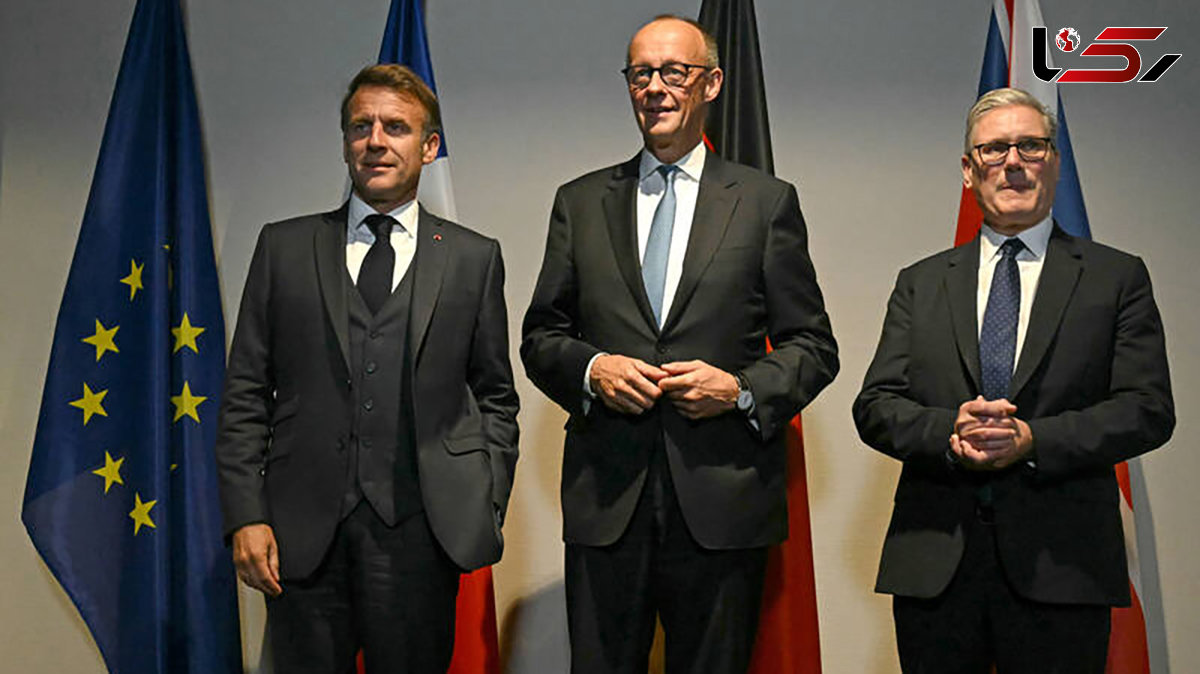Snapback Mechanism Activated
Which Sanctions End the JCPOA and Return Against Iran? Economic Implications + Video
Rokna Political Desk: The three European parties to the JCPOA have activated the “snapback mechanism,” initiating the reimposition of United Nations sanctions against Iran—an action that could formally end the JCPOA, escalate nuclear tensions, and potentially lead Iran to withdraw from the Nuclear Non-Proliferation Treaty (NPT).

According to Rokna, the recent activation of the snapback mechanism by Germany, the United Kingdom, and France has once again highlighted the structural weaknesses of the 2015 nuclear agreement. Critics had warned from the outset that the JCPOA contained mechanisms to penalize Iran, but lacked enforceable tools to hold Western parties accountable for violations of their commitments.
As noted by Iran’s Supreme Leader during the 2018 U.S. threat to withdraw from the agreement, had Iran withdrawn from the JCPOA at that time, today the semi-functional agreement might not have become a tool against the country.
In this context, the U.S.-based Just Security portal, affiliated with the New York University School of Law, published a report titled “What You Need to Know About the UN Snapback Mechanism.” Kelsey Davenport, Director of Nonproliferation Policy at the Arms Control Association, explained the snapback mechanism, UN Security Council Resolution 2231, and potential scenarios.
UN Security Council Resolution 2231: From Hope to Close the Nuclear File to Threat of Sanctions Return
Resolution 2231 was adopted immediately after the JCPOA and formed a key part of the legal framework for its implementation. This resolution:
-
Lifted or amended certain Security Council sanctions.
-
Established the “procurement channel” to monitor sensitive transfers to Iran.
-
Introduced the unprecedented “snapback” mechanism.
-
Set a date in October 2025 as the “end day” for closing Iran’s nuclear file in the Security Council.
According to Davenport, the importance of this resolution today lies in the fact that the activation of the snapback mechanism nullifies all prior achievements and subjects Iran once again to comprehensive UN sanctions.
How the Snapback Mechanism Works
Any JCPOA participant that is a UN member (i.e., the P5+1 minus the EU) can activate the mechanism if it observes a “significant violation” of the agreement. In such a case:
-
The UN Security Council President submits a draft resolution to continue sanctions relief within ten days.
-
The Council has 30 days to adopt it.
-
If the draft is not approved, previous sanctions are automatically reinstated.
This process is designed so that no permanent Security Council member can veto the return of sanctions.
Why Europe Triggered the Snapback
Davenport notes that since 2019, Iran’s reduction of nuclear commitments and suspension of cooperation with the International Atomic Energy Agency (IAEA) raised serious concerns. Meanwhile, Russia and China’s lack of support for condemning Iran prompted European powers to act, fearing that after the snapback mechanism expires, they would lose leverage via the Security Council.
As a result, on August 28, 2025, the three European countries formally initiated the process by sending a letter to the UN Security Council President. They indicated that they would use the 30-day period to negotiate with Iran, either to extend the snapback mechanism or reach a temporary agreement.
Consequences and Potential Scenarios
-
Preferred Scenario: A temporary agreement restoring IAEA oversight and extending the snapback mechanism to prevent escalation.
-
Failure Scenario: Full reinstatement of UN sanctions, including bans on enrichment, heavy water activities, plutonium reprocessing, and missile restrictions.
-
Dangerous Scenario: Iran withdraws from the NPT and moves, openly or covertly, toward a military option, potentially leading to direct confrontation with the U.S. and Israel.
Global Outlook
Although there is general consensus that Iran should not acquire nuclear weapons, there is significant disagreement among world powers on the means to achieve this goal. Russia and China oppose the reimposition of sanctions and may resist their implementation. This situation could undermine the credibility of the Security Council and push Iran toward retaliatory measures.
Conclusion
With the activation of the snapback mechanism, the JCPOA stands closer than ever to collapse. The fate of the agreement is now tied to the 30-day Security Council window—a period that could either preserve a path for diplomacy or subject Iran once again to the most severe international sanctions.
Send Comments